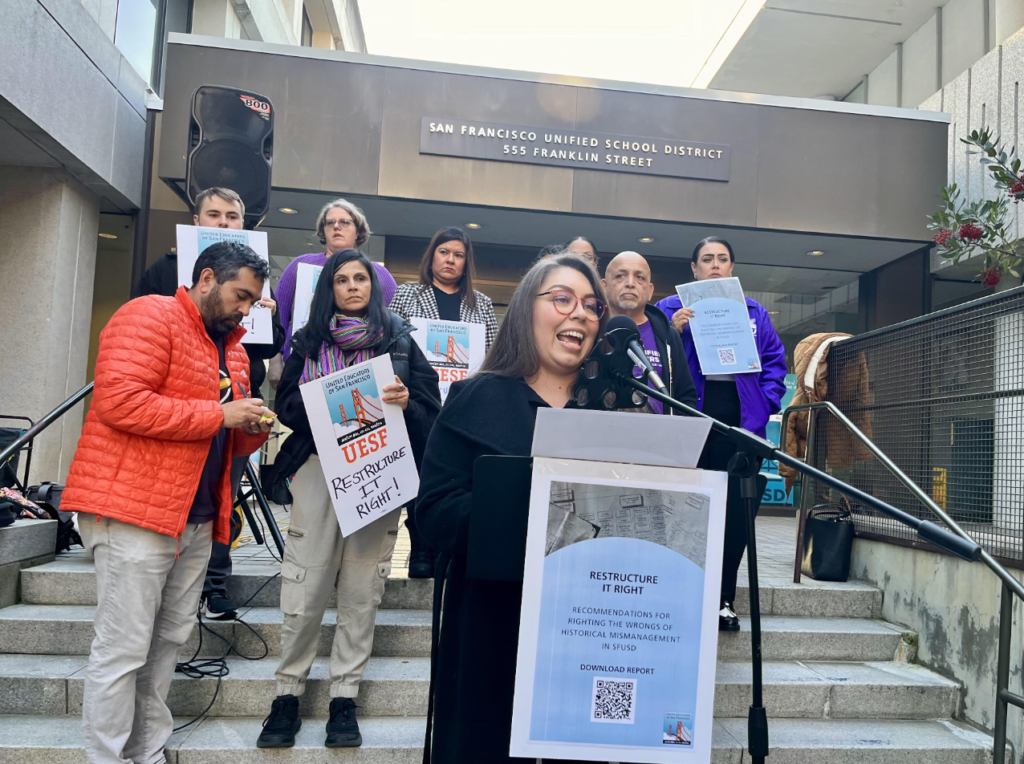Despite state-monitored deficit spending and declining enrollment in San Francisco public schools, the ranks of upper management have been growing, according to a report released Tuesday by the teachers’ union.
The United Educators of San Francisco found that, since the 2009-10 school year, the public school district added 168 high-level administrative positions even as they lost thousands of students. The district currently counts 8,643 employees and the union estimates that nearly a tenth work in the central office.

The teacher’s union also found that it is far from the state norm. While districts spend an average of $201 on central office supervisory staff for each regularly attending student, SFUSD spends $394 per student, according to the report.
“How does one have declining enrollment but increasing managerial administration?” asked UESF President Cassondra Curiel. “There are solutions to be had here. There are actions to be taken tomorrow.”
The report comes as the San Francisco Unified School District works to end its deficit spending amid a dire budget scenario. San Francisco Unified School District, which has a $1.2 billion budget this school year, expects a $420 million deficit by the 2025-2026 school year without any major action.
The district is weighing criteria used to close or merge schools, with proposals for the criteria expected in May.
San Francisco’s school board will vote to approve layoff notices for 134 certificated staff and 96 full-time-equivalent classified staff at next Tuesday’s meeting. While they may not become final in the end, layoff notices lead to uncertainty and low morale that may drive more staff out of the district. The district also planned to present school site budgets next week.
UESF points the blame on past fiscal mismanagement and has continuously advocated to keep cuts away from the classroom. This argument also came into play in 2021, when the district faced a potential state takeover as pandemic relief funds began running out.
It estimates that the 168 high-level administrative positions added since 2009 cost the district $34 million annually in salaries and benefits. Curiel argues that those resources could offset some of the cuts expected for schools.
UESF also highlighted areas of concern, notably the notoriously chaotic enrollment process that has resulted in more segregated schools than in decades past. While the enrollment center has a staff of 27, Long Beach and Berkeley public schools do not have a dedicated enrollment department, according to the report. SFUSD is switching to a zone-based enrollment system like the two districts but has not conveyed what will come of staffing, UESF said.
A spokesperson for SFUSD said the district would provide a response after it reviews the report, and pointed to the educator raises approved in December. A district advisory body is also slated to discuss proposals for central office reorganization in March and the district previously conveyed that central office staffing is the first step to tackling the budget.
The report builds on a Budget and Legislative Analyst report in January 2023, which found that SFUSD came in “well above” the norm of full-time-equivalent workers assigned to central office functions for every 10,000 students. While Curiel notes improvements and needed reorganization under Superintendent Matt Wayne, there is more to be done.
“We appreciate what’s happening in this resource realignment,” Curiel said. “We remain committed to keeping that realignment far away from students. They can do that a little more.”




